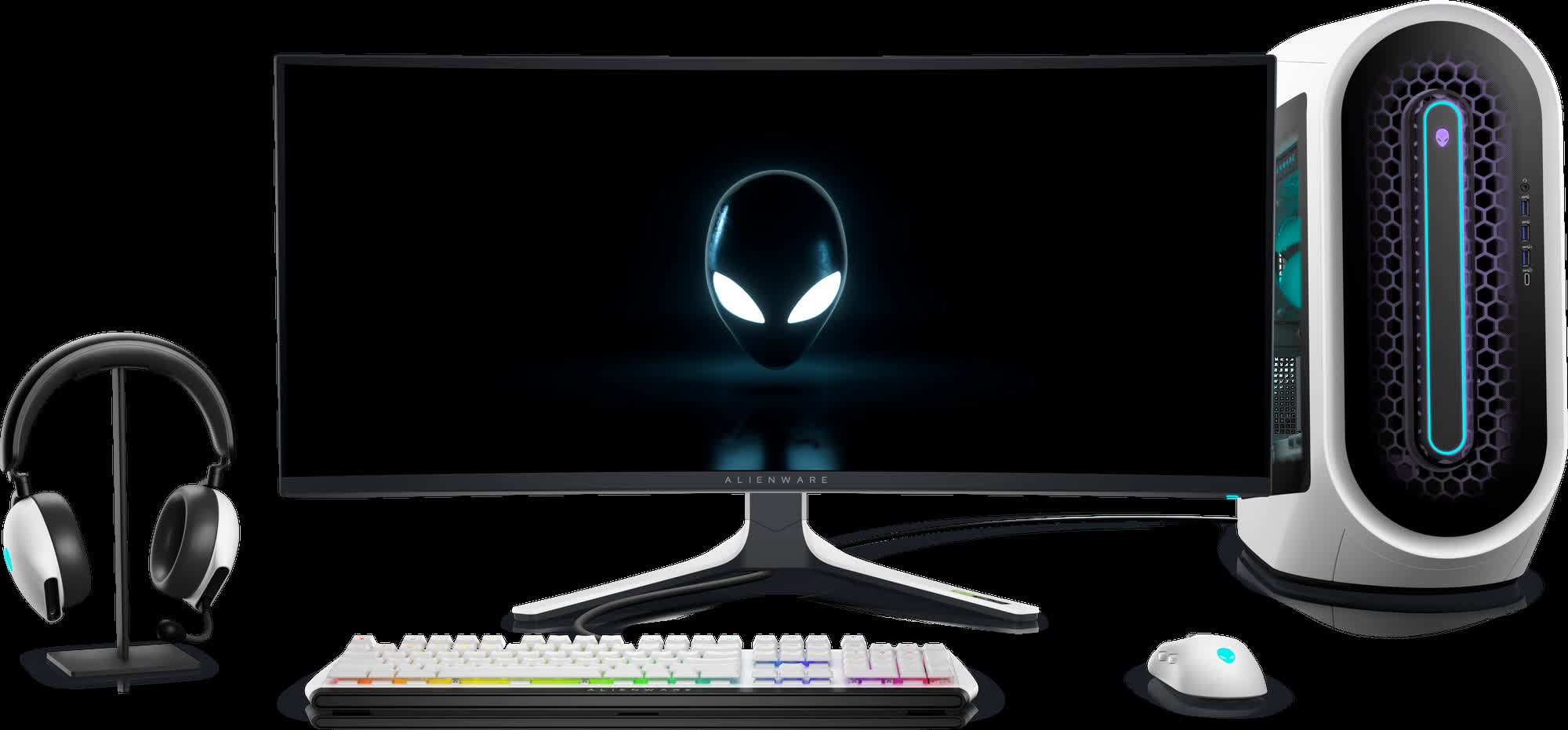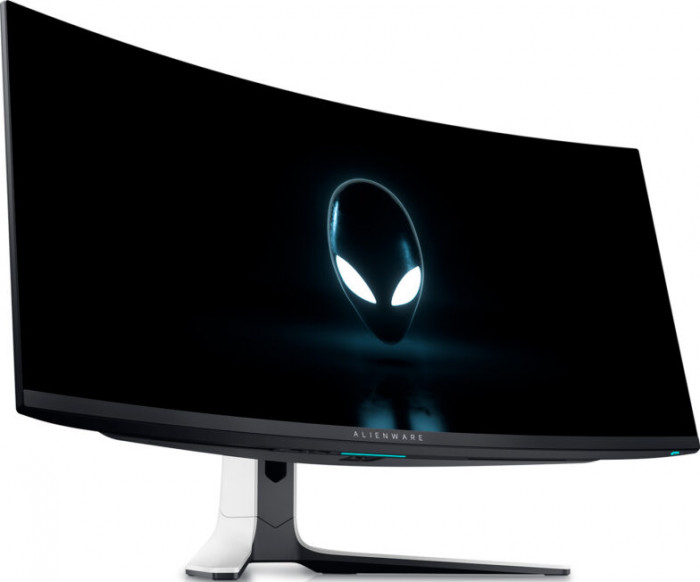In a nutshell: At face value, the new Alienware AW3423DW is a great monitor. It has a 175 Hz refresh rate and an ultrawide 3440 x 1400 resolution. In typical Alienware fashion, it has a steep 1800R curve too. However, its selling point feature is its Quantum Dot OLED panel, which Alienware says will change the game.
At CES 2022, Samsung created a buzz around QD-OLED televisions with several partnered brands, but Alienware stood alone as the only company offering a monitor with the technology. It might have a PR-driven name, but quantum dots are an impressive display innovation.
In brief, they're a filtering layer that converts the blue light emitted by the OLED panel underneath into the red, green, or blue subpixels needed for an image. In theory, quantum dots allow more light to pass through than traditional filters do, and they release light omnidirectionally so that the viewing angles are better. Best of all, they don't get in the way of all the benefits of OLED. The AW3423DW has a blazing 0.1 ms response time and pure blacks like other OLED monitors. It should also have minimal input lag, but Alienware hasn't put a number on it yet.

Alienware's new gaming monitor has 99.3-percent DCI-P3 and 149-percent sRGB coverage, a typical brightness of 250 nits and a peak brightness of 1000 nits, and VESA DisplayHDR 400 certification. In our opinion, that's not good enough for a true HDR experience, but it's still a good viewing experience.
Importantly, it also has a three-year warranty for the panel that covers burn-in. Alienware and Samsung have both said that QD-OLED displays are "resistant" to burn-in, but that could mean a lot of things, so don't lose the receipt.
Perhaps the best feature of the AW3423DW is its price: $1,299. it's a lot, but it’s considerably less than other OLED monitors and one of only a handful designed with gamers in mind.
As is often the case with flagship monitors, this one sounds impressive on paper. Still, we strongly recommend reading a few reviews before picking one up because of its use of new technology. That said, if it takes your fancy, it launches on March 29.
https://www.techspot.com/news/93381-alienware-bringing-first-qd-oled-monitor-market-1300.html

